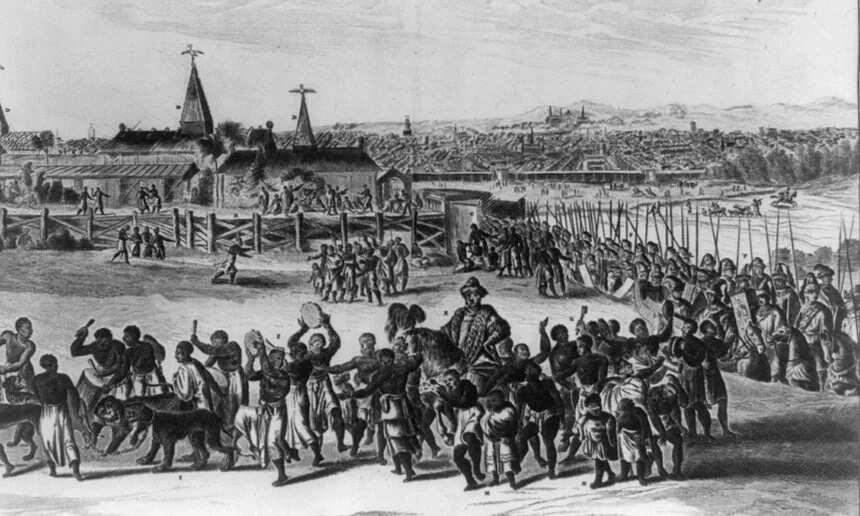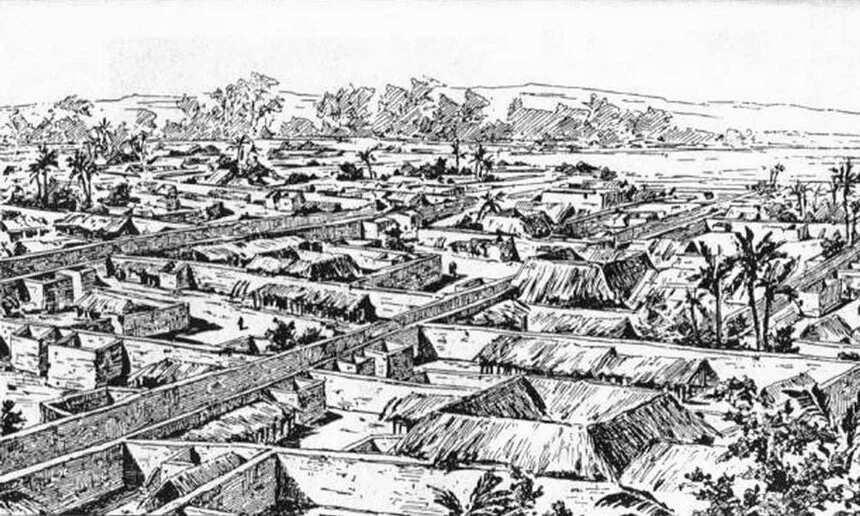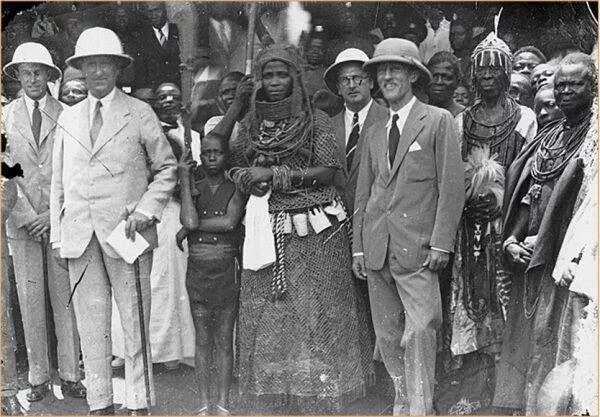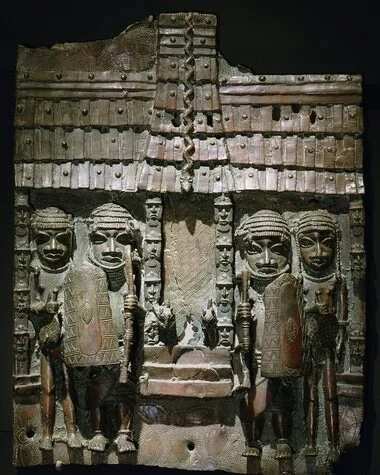The lost city of ancient Benin Empire in medieval times
- The Benin empire was one of the oldest and most highly developed states in West Africa
- The empire dates back to the 11th century
- After several attempts, Benin city, its capital was destroyed by the British in 1897

The Benin Empire was a pre-colonial empire located in what is now southern Nigeria. Its capital was Edo, now known as Benin City.
According to historians, the empire was one of the oldest and most highly developed states in the coastal hinterland of West Africa, dating perhaps to the eleventh century CE until it was annexed by the British Empire in 1897.
The civilisation and greatness also surpassed that of London and other cities of its time.
The first name of the Benin Empire, since its creation some time in the first millennium CE, was Igodomigodo, as called by its own inhabitants.
Their ruler was called Ogiso. Oba Ewuare, the first Golden Age Oba, is credited with turning Benin City into city-states from a military fortress built by Ogiso, protected by moats and walls.

It was from this bastion that he launched his military campaigns and began the expansion of the kingdom from the Edo-speaking heartlands. Oba Ewuare was a direct descendant of Eweka I, great grandson of Oduduwa, Oni of Ife.
READ ALSO: Benin remains part of Yoruba territory - Oni
The Golden Age of the Benin Empire
According to the Guinness Book of World Record (1974 edition) the walls of Benin City and its surrounding kingdom were the world’s largest earthworks carried out prior to the mechanical era.
Estimates by the New Scientist's Fred Pierce described Benin City’s walls at one point to be:
"Four times longer than the Great Wall of China, and consumed a hundred times more material than the Great Pyramid of Cheops."
A series of walls was said to have marked the growth of the sacred city from 850 AD until its decline in the 16th century. In the 15th century Benin became the greatest city of the empire created by Oba Ewuare.
To enclose his palace the Oba was said to have commanded the building of Benin's inner wall, a seven-mile long earthen rampart girded by a moat 20 feet deep.

Like the great wall of China, the Benin wall was reputed to have taken about a century to build and required a workforce of 1,000 labourers working ten hours a day seven days a week . The wall also had thoroughfares and erected nine fortified gateways.
Land mass of Benin Empire
According to a report on Lost Cities in the UK's Guardian newspaper, Benin city was also recorded as one of the first cities to have a semblance of street lighting.
Huge metal lamps, many feet high, were built and placed around the city, especially near the king’s palace. Fueled by palm oil, their burning wicks were lit at night to provide illumination for traffic to and from the palace.
When the Portuguese first “discovered” the city in 1485, they were stunned to find this vast kingdom made of hundreds of interlocked cities and villages in the middle of the African jungle.
READ ALSO: Benin Kingdom receives new ruler
They called it the "Great City of Benin'', at a time when there were hardly any other places in Africa the Europeans acknowledged as a city. Indeed, they classified Benin City as one of the most beautiful and best planned cities in the world.

In 1691, the Portuguese ship captain Lourenco Pinto, shocked by the grandeur of Benin, had observed:
"Great Benin, where the king resides, is larger than Lisbon; all the streets run straight and as far as the eye can see. The houses are large, especially that of the king, which is richly decorated and has fine columns. The city is wealthy and industrious. It is so well-governed that theft is unknown and the people live in such security that they have no doors to their houses."
In contrast, London at the same time is described by Bruce Holsinger, a professor of English at the University of Virginia, as being a city of “thievery, prostitution, murder, bribery and a thriving black market made the medieval city ripe for exploitation by those with a skill for the quick blade or picking a pocket.''
Historians also recorded the empire to have extended from the western Ibo tribes on the shores of the Niger river, through parts of the southwestern region of Nigeria to much of present-day Ondo state, and the isolated islands currently Lagos Island and Obalende in the coastal region of present-day Lagos state.
European contact
The first European travelers to reach Benin were Portuguese explorers in about 1485. The first English expedition to Benin was in 1553, and significant trading developed between England and Benin based on the export of ivory, palm oil and pepper.

Visitors in the 16th and 17th centuries brought back to Europe tales of "the Great Benin", a fabulous city of noble buildings, ruled over by a powerful king.
However, the Oba began to suspect Britain of larger colonial designs and ceased communication with the British until the British Expedition in 1896-97 when British troops captured, burned, and looted Benin City, which brought the Benin Empire to an end.
A 17th-century Dutch engraving from Olfert Dapper's Nauwkeurige Beschrijvinge der Afrikaansche Gewesten, published in Amsterdam in 1668 says:
"The king's palace or court is a square, and is as large as the town of Haarlem and entirely surrounded by a special wall, like that which encircles the town. It is divided into many magnificent palaces, houses, and apartments of the courtiers, and comprises beautiful and long square galleries, about as large as the Exchange at Amsterdam, but one larger than another, resting on wooden pillars, from top to bottom covered with cast copper, on which are engraved the pictures of their war exploits and battles."
After several attempt to conquer the empire, Benin resisted becoming a British protectorate throughout the 1880s, but the British remained persistent.
Progress was made finally in 1892 during the visit of vice-consul H.L. Gallwey. This mission was significant, being the first official visit after Richard Burton's. Moreover, it would also set in motion the events to come that would lead to Oba Ovonramwen's demise.

Lost forever: The demise of the Benin Empire
When Benin discovered Britain's true intentions, eight unknowing British representatives who came to visit Benin, were killed. As a result, a punitive expedition was launched in 1897.
READ ALSO: Benin, Kingdom of the sky-kings
The British force, under the command of Admiral Sir Harry Rawson, razed and burned the city, destroying much of the country's treasured art and dispersing nearly all that remained.
The stolen portrait figures, busts, and groups created in iron, carved ivory, and especially in brass (conventionally called the "Benin Bronzes") are now displayed in museums around the world.
Source: Legit.ng
